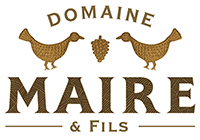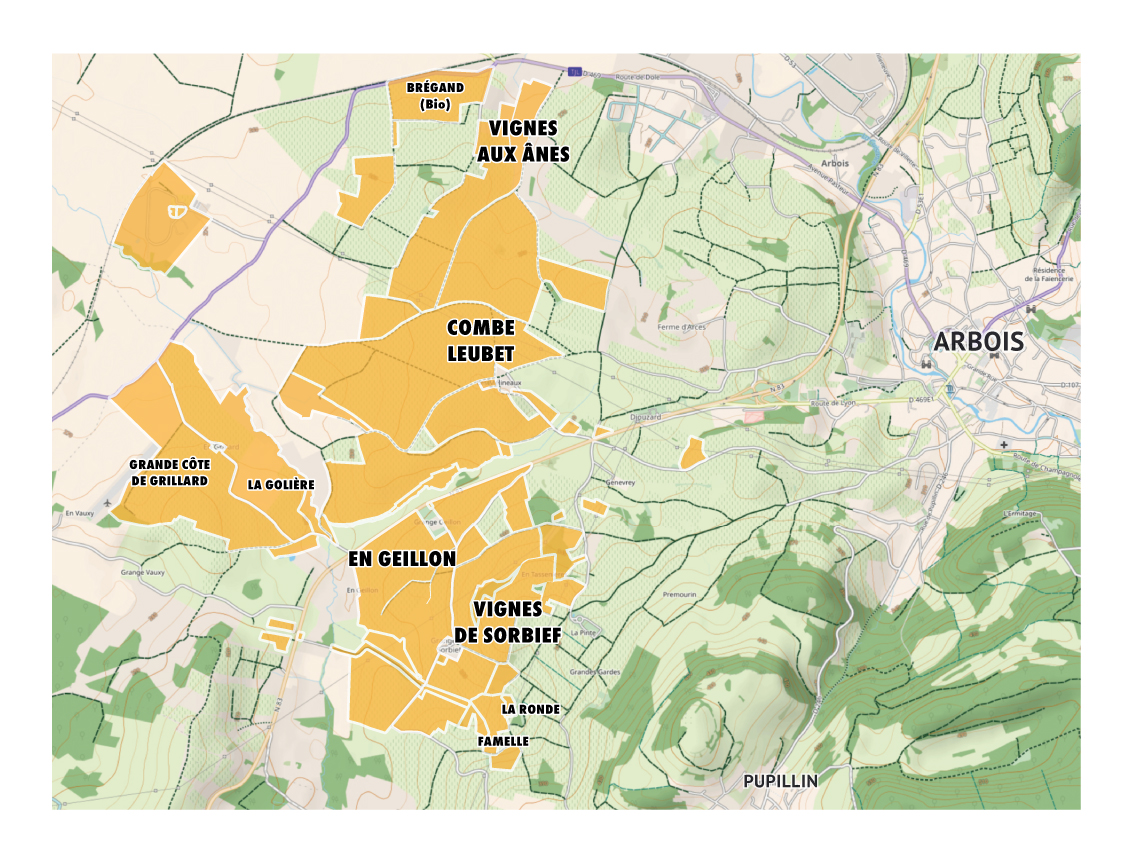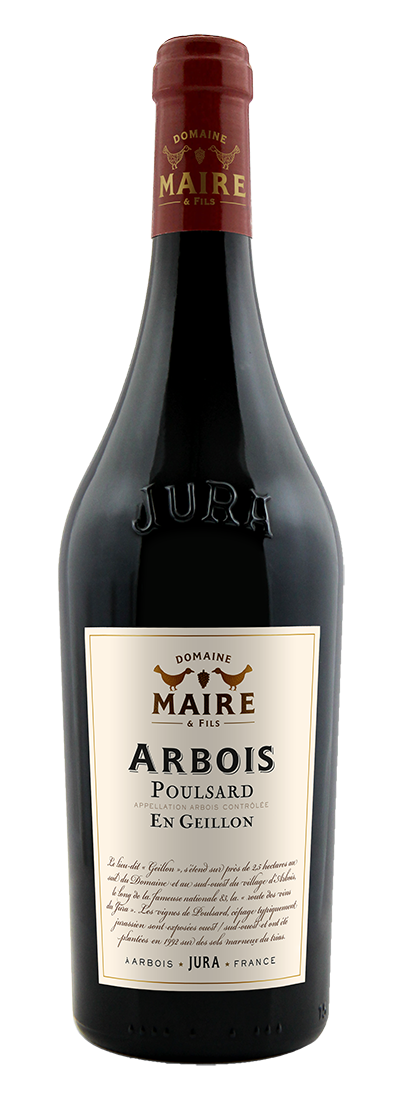ARBOIS POULSARD EN GEILLON 2018

The Poulsard, an old native grape variety, also known as Ploussard, appreciates strong soils, with marl and clay.
- A typical orange-clear red colour, with coral highlights of a light intensity coming from the grape variety,
- The nose offers aromas of small red fruits and fine notes of spices.
- The mouth is elegant, generous with some wildness and underwood notes.
Serve chilled but not too cold (between 13 and 17°C / 55-62°F) with appetizers and cured meats, at room temperature serve with veal chops and Comté cheese, pork roast with prunes, lamb in curry sauce, young cheeses.
2 to 5 years.
The Arbois AOC is the oldest and largest of the Jura's four geographic AOCs. In particular, it was France's first AOC (created in 1937).
Its name originates in the Celtic words "ar" and "bois" that would mean "fertile land".
In order to create this harmonious Arbois Poulsard, we identified and selected one of the best plot adapted to this grape variety in the historical family Maire’s estate: The “En Geillon” parcel located in the south of the Domaine and to the southwest of the Arbois village along the famous “Route des vins du Jura” (the Jura wine road) RN 83:
- Surface: 2,43 Ha
- West and North West exposure
- Average age of vines : 26 years ( 1992 )
- Soils: marls from the Triassic period
The work in the vines, is based on the respect of the nature and the soil. For young vines, located on steep slopes, to avoid erosion, we cultivate a row out of two, practice soil reassembly to aerate the lands subjected to settlement due to moisture, and grass with plants. Such as clover, which, by competing on the vine, can modulate its mineral and water supply and control its vigour and yield.
The Guyot double size is necessary to better control its performance.
Reception of the manual harvest followed by a total maceration of 12 days in thermos-regulated stainless steel tanks. Then, regularly throughout the fermentation, incorporating some pumping and pigeage (punching).
At the moment of pressing, the press and drop juices are assembled and withdrawn for malolactic fermentation on fine lees. Ageing, partially in oak barrels, and the rest in tank, for 2-3 months allowing to keep the fruity and typical character of the grape.
Light filtration before bottling.
2018: An exceptional vintage!
There are vintages that make a mark on a whole region, and the 2018 will no doubt be one of these. Harvesting began on 20 August with the Crémants. They lasted for a month and the weather was perfect and quality exceptional. The grapes were in perfect health and had reached optimum ripeness.
The end of the winter was very cold with intense episodes of frost, which prolonged the dormancy of the vines. Bud-burst was later than usual but there were no spring frosts. The spring was very hot, with rain and frequent storms. There was even some hail, but fortunately, the estate’s vines were spared.
Summer was hot and dry, as it was across France, even on the vine-growing plateaus of the Jura, which are usually cooler.
Conditions were perfect for sunny harvesting. Apart from the Savagnin varietal, which is more sensitive, and suffered a little from the intense heat, the harvest was abundant and very high in quality.


